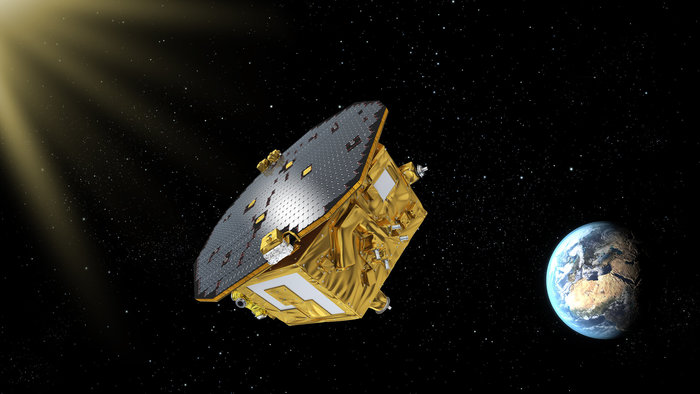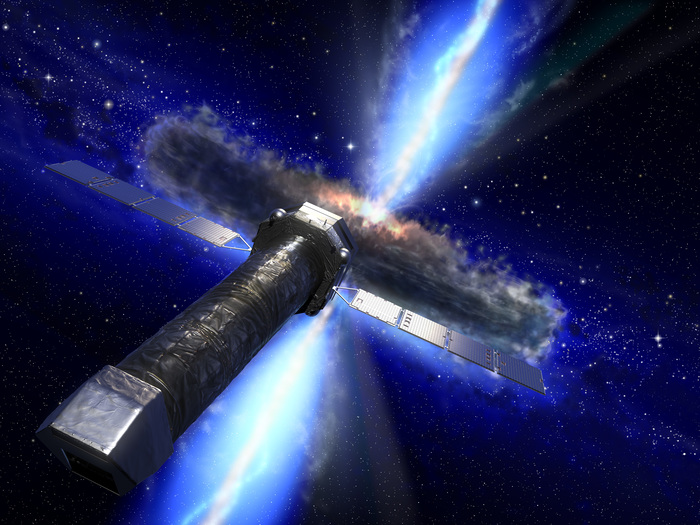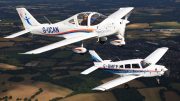Yesterday the Royal Swedish Academy of Sciences the Nobel Prize Physics has been awarded to Roger Penrose, Reinhard Genzel, Andrea Ghez.
The European Space Agency has different missions investigating black holes, and can share below statements with media.
Paul McMamara, Mission Coordinator at ESA
Dr McNamara’s background is in Gravitational Waves (GW), particularly low frequency GW coming from the merger of supermassive black holes, like the ones at the centre of our galaxy. He worked on the LISA mission (space borne gravitational wave detector) for ~25 years, firstly as a grad student and then as a university researcher, before he moved to ESA as the Project Scientist for LISA Pathfinder. Following the success of LISA Pathfinder, he then became the Study Scientist for LISA, which he continued until the beginning of this year. Paul then moved to the Science Coordination Office, where he now follows all astronomy missions, including LISA, Athena, XMM Newton, and Integral.
Statement: “Black holes are one of the most enigmatic objects in the Universe. Our understanding of these objects has given us an insight into why the Universe looks the way it does. Penrose’s seminal work on explaining the formation from Black Holes in a General Relativistic framework, is the basis for many fields of cosmology and astrophysics, including the understanding of gravitational wave signature coming from the merger of two black holes – the discovery of which was awarded the Nobel Prize for Physics in 2017. With the existence of black holes no longer in doubt, the next step was to observationally confirm their existence. Genzel and Ghez’s observations of the orbits of the stars around the centre our own galaxy never fails to amaze both professional astronomers as well as the general public. These observations, taken over a timespan of more than 20 years, categorically confirm the existence of a massive compact object at the centre of the galaxy….a supermassive black hole of 4 million times the mass of our sun! We now believe most, if not all, large galaxies in the Universe have a supermassive black hole located at their centre.”
Erik Kuulkers, INTEGRAL Project Scientist at ESA
Erika Kuulkers is the Project Scientist for ESA’s INTErnational Gamma-Ray Astrophysics Laboratory (INTEGRAL), which is designed to detect some of the most energetic radiation that comes from space, including the extremely powerful emission from the vicinity of compact and massive black holes. As an astronomer, my research includes understanding the phenomenology of how material interacts with compact stars such as black holes.
Statement: “The work by Penrose, Genzel & Ghez has been seminal, which culminated, into the first image of a black hole captured last year. We are now able to not only understand, but also see the most extreme physics in the universe at play.”
Oliver Jennrich, LISA scientist at ESA
Dr Oliver Jennrich is study scientist at ESA for the LISA mission, working on gravitational wave related projects (LISA, LIGO, GEO600) since more than 20 years. Side interest in Fundamental Physics and the transition between quantum mechanics and classical physics. PhD 1998 at University of Hannover, PostDoc at JILA and Univeristy of Glasgow.
Statement: “Black holes play a fundamental role both in our understanding of the Universe and the formation of the structures that we see today, such as galaxies and groups of galaxies. The discovery of a black hole in the center of our galaxy through the observation of the orbit of stars not only confirms our understanding of General Relativity, it also raises many more new questions e.g. on the history of such massive objects and their influence on their environments. The planned ESA mission LISA, a mission to observe gravitational waves will be able to detect mergers of such massive black holes essentially everywhere in the Universe and will be able to shed light on the questions on how the massive black in the centers of galaxies form and about their role in the formation of the large-scale structures in the Universe.”
Dr. Matteo Guainazzi, Athena scientist at ESA
Dr Matteo Guainazzi is Study Scientist for two future high-energy missions of the European Space Agency (the L-class Athena, and the candidate M-class THESEUS), as well as Project Scientist of the European contribution to the JAXA-led X-ray observatory X-Ray Imaging Spectroscopy Mission (XRISM.
Statement: “The Nobel Prize to Prof. Genzel and Ghez constitutes the culmination of a decade-long endeavor to find unquestionable observational evidence of the existence of astrophysical black holes. This stream of investigation was triggered by the theoretical insight that black holes are an inevitable consequence of Einstein’s General Relativity as prof. Penrose’s investigation brilliantly showed”.
European Space Agency missions regarding black holes
LISA
The Laser Interferometer Space Antenna (LISA) will be the first space-based
gravitational wave observatory. Selected to be ESA’s third large-class mission,
it will address the science theme of the Gravitational Universe. LISA will
consist of three spacecraft separated by 2.5 million km in a triangular
formation, following Earth in its orbit around the Sun. Launch is expected in
2034.

LISA will aim to tackle a number of key themes under the Cosmic Vision science theme of ‘The Gravitational Universe’. Three of its core science objectives are to do with black holes: to race the origin, growth and merger history of massive black holes across cosmic ages; to understand the astrophysics of stellar-origin black holes; and to explore the fundamental nature of gravity and black holes.
ATHENA
Athena – Advanced Telescope for High-ENergy Astrophysics – will be an X-ray telescope designed to address the Cosmic Vision science theme ‘The Hot and Energetic Universe’. By combining a large X-ray telescope with state-of-the-art scientific instruments, Athena will be able to make an important contribution to answering these questions. In 2014, Athena was selected as the second large (L-class) mission in ESA’s Cosmic Vision programme.

The theme poses two key astrophysical questions: “How does ordinary matter assemble into the large-scale structures we see today?” and “How do black holes grow and shape the Universe?”
INTEGRAL
ESA’s international Gamma-Ray Astrophysics Laboratory is detecting some of the most energetic radiation that comes from space. It is the most sensitive gamma-ray observatory ever launched. INTEGRAL is an ESA mission in cooperation with Russia and the United States.

The spacecraft was launched on 17 October 2002 and it’s helping to solve some of the biggest mysteries in astronomy. Every three days INTEGRAL orbits the Earth once. The spacecraft spends most of its time at the furthest parts of its orbit, at an altitude higher than 40 000 kilometres, well outside the Earth’s radiation belts, to avoid background radiation effects. From here ESA’s gamma-ray observatory sends back to Earth new information about the most exciting phenomena in the universe. It reports on violent explosions, the formation of elements, black holes and other exotic objects in our Milky Way, the cosmic neighbourhood and much further, in distant galaxies at the edge of the observable universe.
Source : ESA
https://www.esa.int/














Be the first to comment on "ESA statements following up on Nobel prize for Physics"